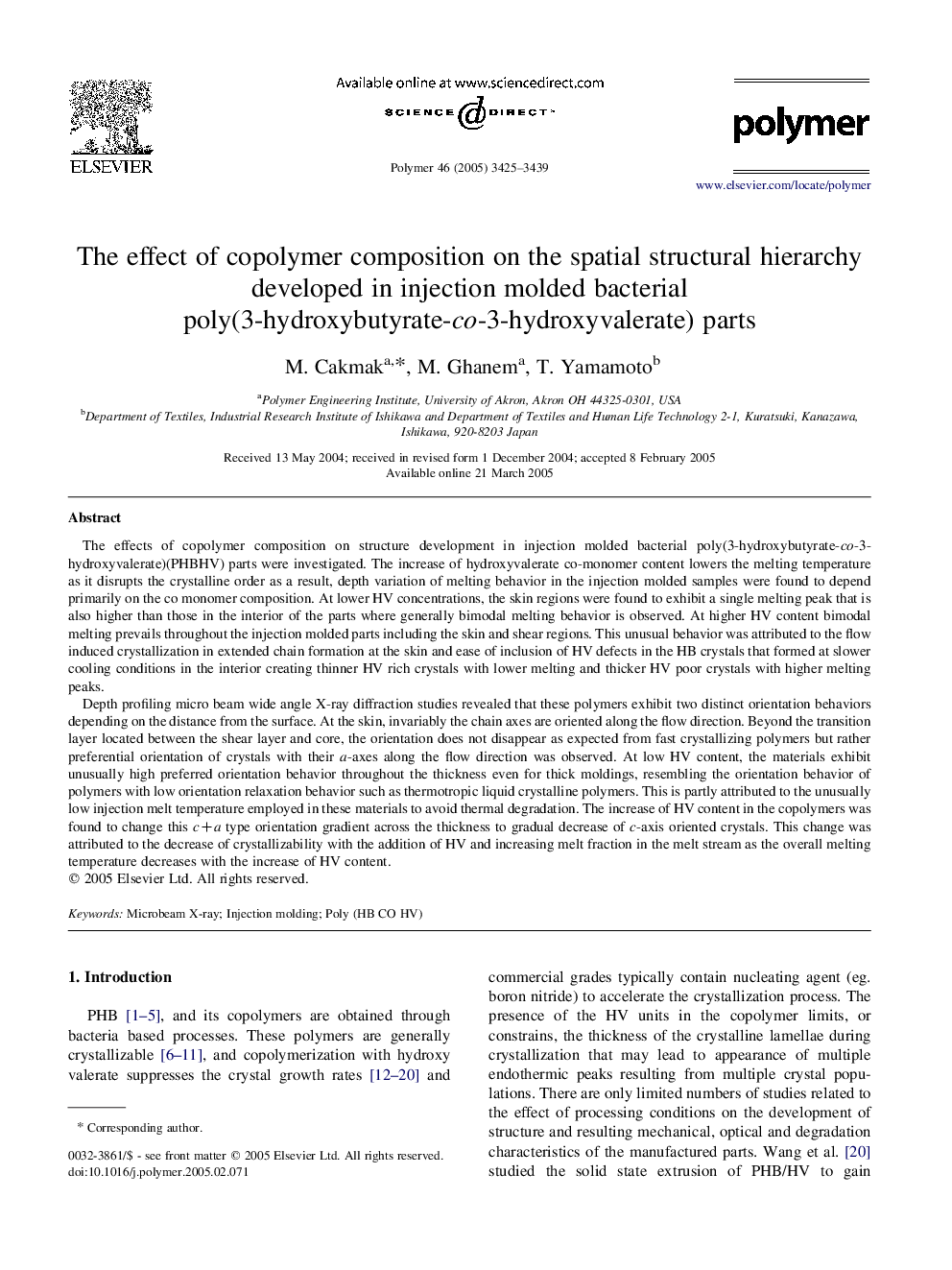| Article ID | Journal | Published Year | Pages | File Type |
|---|---|---|---|---|
| 5187946 | Polymer | 2005 | 15 Pages |
Abstract
Depth profiling micro beam wide angle X-ray diffraction studies revealed that these polymers exhibit two distinct orientation behaviors depending on the distance from the surface. At the skin, invariably the chain axes are oriented along the flow direction. Beyond the transition layer located between the shear layer and core, the orientation does not disappear as expected from fast crystallizing polymers but rather preferential orientation of crystals with their a-axes along the flow direction was observed. At low HV content, the materials exhibit unusually high preferred orientation behavior throughout the thickness even for thick moldings, resembling the orientation behavior of polymers with low orientation relaxation behavior such as thermotropic liquid crystalline polymers. This is partly attributed to the unusually low injection melt temperature employed in these materials to avoid thermal degradation. The increase of HV content in the copolymers was found to change this c+a type orientation gradient across the thickness to gradual decrease of c-axis oriented crystals. This change was attributed to the decrease of crystallizability with the addition of HV and increasing melt fraction in the melt stream as the overall melting temperature decreases with the increase of HV content.
Keywords
Related Topics
Physical Sciences and Engineering
Chemistry
Organic Chemistry
Authors
M. Cakmak, M. Ghanem, T. Yamamoto,
